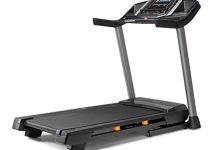Everything You Should Know About Daily Push-Up & Plank Grit
A daily push-up and plank challenge can enhance strength and stability. Consistency and progressive overload are key to success.
Engaging in a daily push-up and plank challenge is an excellent way to boost your overall fitness, targeting core strength, upper body conditioning, and endurance. This straightforward yet powerful regimen not only sculpts the physique but also fortifies the muscles, laying a solid foundation for more advanced workouts.
Whether you’re a fitness enthusiast or just getting started, these exercises can be adapted to any level, allowing gradual improvement in form and stamina. Embracing this challenge requires setting realistic goals, tracking progress, and committing to a routine that progressively increases in intensity. Ensure you are familiar with proper techniques to maximize benefits and avoid injury, keeping your fitness journey both effective and safe.
Daily Push-up & Plank Grit Essentials
Embarking on a fitness journey with a push-up and plank challenge is a commendable goal. These exercises can transform your body, boost your strength, and improve your overall health. By focusing on the essential components of this daily regimen, you can set yourself up for success. Let’s delve into the core principles that pave your way to fitness triumph.
Understanding The Benefits Of Daily Push-ups And Planks
The core advantages of incorporating push-ups and planks into your daily routine cannot be overstated. These movements work multiple muscle groups, providing a full-body workout with a focus on the chest, shoulders, triceps, and core.
- Enhanced Muscle Definition: Build and tone muscles for a more defined look.
- Boosted Core Strength: Planks engage various muscle groups, fortifying core stability.
- Improved Posture: Strengthening the back and core muscles leads to better posture.
- Increased Metabolic Rate: Muscle development contributes to an accelerated metabolism.
Establishing A Routine For Consistent Practice
A consistent routine lies at the heart of any fitness endeavor. By setting a concrete plan, you elevate your chances of sticking with your challenge. Apply these tips to foster a daily practice:
- Determine a specific time each day to perform your exercises. This builds a natural habit.
- Start with manageable repetitions and durations. Gradually increase intensity to avoid burnout.
- Track your progress. Seeing improvement provides motivation and a sense of accomplishment.
- Seek variety in your exercises to engage different muscle groups and prevent boredom.
Common Pitfalls And How To Avoid Them
Recognizing typical mistakes can prevent them from derailing your progress:
| Pitfall | Solution |
|---|---|
| Loss of Motivation | Set clear goals and remember why you started. Celebrate small victories. |
| Improper Form | Focus on technique over quantity. Consider video tutorials or professional advice. |
| Plateauing Results | Incorporate variations and increase difficulty to challenge your muscles further. |
| Overexertion | Listen to your body. Implement rest days to allow muscle recovery. |

Credit: www.pinterest.com
Integrating Push-ups Into Your Routine
Integrating Push-Ups Into Your Routine can dramatically shape your fitness journey, building both strength and discipline. Engaging major muscle groups, push-ups are the all-in-one exercise marvels that can turn your daily workout from mundane to invigorating. A daily push-up and plank challenge is a straightforward way to kickstart this integration. It not only fortifies your physical frame but also enhances mental tenacity. Let’s explore how you can begin and sustain this transformative exercise in your daily regimen.
Starting With Basics: Form And Frequency
Perfecting your push-up form is crucial.Begin by mastering the standard push-up to ensure you’re activating the correct muscles and minimizing the risk of injury. Position your hands shoulder-width apart, with your body forming a straight line from heels to head. Engage your core, and lower your body until your chest nearly touches the floor, then push back up. Focus on a moderate pace that maintains form.
When considering how often to perform push-ups, consistency is key. Start with manageable sessions that fit easily into your daily schedule. You could:commence with sets of 10 and gradually increase the count, orchallenge yourself with more repetitions every week. The goal is regularity – ensure push-ups become a non-negotiable part of your routine.
Progressing With Variations For Increased Challenge
Once the basic push-up becomes less challenging, it’s time to raise the bar. Introducingvariations can prevent stagnation and propel your strength to new levels. Consider these upgrades:
- Wide-grip push-ups: Target your chest by placing your hands wider than shoulder-width.
- Diamond push-ups: Focus on your triceps by bringing your hands together under your chest in a diamond shape.
- Decline push-ups: Elevate your feet to increase resistance and work the upper chest and shoulders.
By regularly mixing in different push-up styles, you cancontinually challenge your muscles and avoid fitness plateaus, ensuring you’re always progressing.
Measuring Improvements In Strength And Endurance
Tracking your progress gives you tangible proof of your hard work and can be highly motivating. Record your initial capabilities – the number of push-ups you can perform or the duration you can hold a plank. Then, set milestones to measure against. For example, aim toincrease your push-up count by five every two weeks, or extend your plank time by15 seconds each week. Celebrate these gains; they’re milestones on your journey towards peak physical endurance.
Furthermore, you couldincorporate compound exercises such as burpees or medicine ball throws to gauge functional strength. These reflect real-life movements and can reveal improvements in your push-up and plank challenge outcomes.
Balancing Grit With Recovery
Embarking on a daily push-ups and plank challenge is a commendable endeavor, showcasing dedication to improving your physical strength and endurance. As you set out to build those muscles and crush your fitness goals, it’s vital to balance your gritty determination with ample rest and recovery. Why? Because muscle-building isn’t just about the workout—it’s equally about how you let your body bounce back. Let’s explore the wisdom behind rest days, the tell-tale signs of too much exercise, and how to smartly incorporate recovery into your routine for peak performance.
Importance Of Rest And Recovery In Muscle Building
While embarking on your challenge, remember that muscles need time to repair and grow after being stressed during exercise. Skipping rest could backfire, leading to plateaus in strength gains or, worse, injury. Here’s what rest and recovery bring to the table:
- Healing: Exercise creates microscopic tears in muscle fibers, which heal and grow during rest, leading to increased strength and size.
- Preventing burnout: Scheduling rest days helps maintain your motivation and mental sharpness for the challenge.
- Performance improvement: Adequate recovery improves subsequent performance, as muscles have had the chance to recuperate.
Signs You Might Be Overdoing Your Workout
Listen to your body’s cues to prevent overtraining. Ignoring these signs can set you back in your daily push-ups and plank challenge:
- Persistent soreness: Muscle soreness that doesn’t resolve after 72 hours is a clear signal for more rest.
- Elevated resting heart rate: An increased heart rate upon waking could indicate insufficient recovery.
- Stagnation or regression: Hitting a plateau or losing strength might mean you’re not giving muscles time to heal.
Best Practices For Rest Days And Active Recovery
Integrating rest has its own set of best practices. Let’s lay those out:
| Rest Day Practices | Active Recovery |
|---|---|
| Full rest: Engage in no structured physical activity to allow total recuperation. | Light activity: Choose low-impact exercises, such as walking or yoga, to stimulate circulation and aid muscle repair. |
| Hydrate & eat well: Focus on nutrient-rich foods and plenty of fluids to support the healing process. | Flexibility work: Gentle stretching or mobility routines help maintain a range of motion and reduce soreness. |
| Sleep: Prioritize sleep, as it accelerates repair and fortifies mental resilience for your next workout. | Low-intensity cardio: Activities like swimming or cycling at a relaxed pace can flush out toxins and deliver fresh nutrients to muscles. |
In balancing grit with recovery, you’ll find the sustainable path to not just starting your push-ups and plank challenge but sticking with it. Respect your body’s need for rest, and you’ll be rewarded with consistent, impressive gains towards your fitness aspirations.
Everything You Should Know About Plank Variations
The plank is a powerhouse of an exercise that targets multiple muscle groups, improves core strength, and enhances stability throughout your entire body. However, repeating the same exercise every day can lead to monotony. That’s where the versatile world of plank variations comes into play. Different types of planks target various muscles, introduce new challenges, and keep your routine fresh and engaging. Let’s delve into some popular variations and techniques to boost your daily plank challenge.
Standard Planks And Their Key Benefits
Standard planks, also known as front planks, set the foundation for all other variations.
- Engages multiple muscle groups: Core, shoulders, chest, back, and glutes.
- Improves posture: Stronger core muscles contribute to better alignment.
- Increases mental toughness: Holding a plank requires concentration and endurance.
- Accessible to beginners: Modifiable by changing the duration or doing it on the knees.
For beginners, start with short intervals, such as 20 to 30 seconds, and gradually increase the time as your strength and endurance improve.
Exploring Side Planks, Reverse Planks, And More
When you’ve got the hang of the standard plank, explore other variations to challenge your body.
| Plank Variation | Primary Benefits |
|---|---|
| Side Planks | Targets the obliques and improves lateral stability. |
| Reverse Planks | Strengthens the posterior muscles and enhances shoulder stability. |
| Plank Shoulder Taps | Introduces movement, increases heart rate, and boosts coordination. |
| Plank Hip Dips | Engages the obliques, increases difficulty, and adds a dynamic movement. |
Incorporate these variations into your daily routine to work different muscle groups and keep your workout challenging.
How To Progressively Increase Plank Holding Times
To advance your plank holding time, consistency and gradual progression are key.
- Start with short intervals: Build a foundation with manageable times.
- Incremental increases: Add a few seconds to each set or session.
- Use a timer: Track your progress and stay accountable.
- Vary your session: Mix in different plank variations to prevent fatigue.
- Quality over quantity: Focus on maintaining proper form rather than just duration.
By gradually increasing your time and introducing variety to your daily plank challenge, you’re on your way to building endurance, strength, and resilience in your core and beyond.
Tailoring Your Workout To Individual Needs
Embracing a daily exercise challenge like push-ups and planks can transform your fitness journey, sculpting strength and endurance that extends beyond mere physical boundaries. Yet, this quest is not one-size-fits-all. Recognizing the uniqueness of every individual’s body, fitness level, and personal goals is paramount. Discover how to tailor your push-up and plank challenge to mesh seamlessly with your unique circumstances, allowing you to reap maximum benefits while maintaining motivation and joy in your workouts.
Adjusting Push-up And Plank Difficulty Levels
Customizing the intensity and complexity of push-ups and planks ensures continuous progress without risking injury or loss of interest.
- Beginner modifications: Start with wall push-ups or knee planks to build foundational strength.
- Intermediate adjustments: Transition to traditional push-ups and forearm planks while focusing on form.
- Advanced challenges: Introduce variations like decline push-ups or side planks to enhance difficulty.
Listen to your body and modify accordingly, keeping workouts both safe and effective.
Incorporating Push-ups And Planks In Various Fitness Goals
Whether pursuing weight loss, muscle building, or enhanced flexibility, integrating push-ups and planks into your regimen can lead to remarkable outcomes.
| Fitness Goal | Push-Ups | Planks |
|---|---|---|
| Weight Loss | Increase repetitions | Longer duration holds |
| Muscle Building | Weighted variations | Dynamic movements |
| Flexibility | Yoga push-ups | Stretching planks |
Align these exercises with your goals for a well-rounded, effective fitness journey.
Tips For Staying Motivated And Tracking Progress
Maintaining enthusiasm is key to the longevity of your fitness challenge. Use these tips to keep the fire burning:
- Set Clear Objectives: Define specific, achievable goals and the reasons behind them.
- Record Milestones: Use a fitness app or journal to track reps, sets, and hold times.
- Vary Your Routine: Introduce new push-up/plank variations to prevent boredom.
- Celebrate Success: Acknowledge every achievement, no matter the size.
Stay on track by regularly assessing your progression and adjusting your approach as needed.
Adapting For Injury Prevention
Embarking on a daily push-up and plank challenge can significantly enhance strength and endurance. But it’s not without risks if done improperly. Injury prevention is paramount to ensuring consistent progress without setbacks. Integrating smart adaptations into your routine safeguards against common fitness-related injuries, allowing you to enjoy the full benefits of your commitment.
Ensuring Proper Technique To Avoid Injuries
Mastering the correct form in both push-ups and planks is the cornerstone of a safe and effective workout. In push-ups, the alignment of hands, elbows, and shoulders plays a critical role. Your body should form a straight line from head to heels. Plank posture demands a similar attention to alignment, with core engagement key to protecting the lower back. The following points highlight the essential technique checklist:
- Hand Placement: Set hands slightly wider than shoulder-width apart.
- Elbow Angle: Elbows at a 45-degree angle to your body during the push-up.
- Body Alignment: Maintain a neutral spine throughout both exercises.
- Core Engagement: Tighten your abs to support your back.
- Controlled Movements: Avoid sagging hips or piking up during the plank.
Strengthening Core Muscles To Support Your Push-up And Plank Practice
A strong core is not only essential for a stable plank position but also for executing push-ups with proper form. Enhance your core strength with exercises such as:
- Dead bugs
- Leg raises
- Bicycle crunches
Incorporate these exercises into your regular routine to build a solid foundation that supports your push-up and plank efforts and minimizes injury risk. Regular core workouts contribute significantly to overall stability and strength.
When To Seek Professional Advice Regarding Workout-related Pain
While some muscle soreness is expected, sharp or persistent pain is a warning sign that should not be ignored. Seek professional advice in situations such as:
| Warning Sign | Action |
|---|---|
| Sharp pain during exercise | Stop immediately; consult a healthcare provider. |
| Persistent joint pain | Take a break and seek evaluation from a physical therapist or doctor. |
| Inability to maintain proper form | Reassess technique with a qualified trainer or reconsider the challenge intensity. |
Being attuned to your body’s signals is essential. Professional guidance provides customized insights tailored to your unique health needs and ensures you can continue your fitness journey safely.
Conclusion
Embracing a daily routine of push-ups and planks can revolutionize your fitness journey. Start at your own pace, stay consistent, and the results will follow. Remember, dedication and perseverance are key. For a stronger, healthier you, the challenge awaits. Let’s get pushing!
Table of Contents


